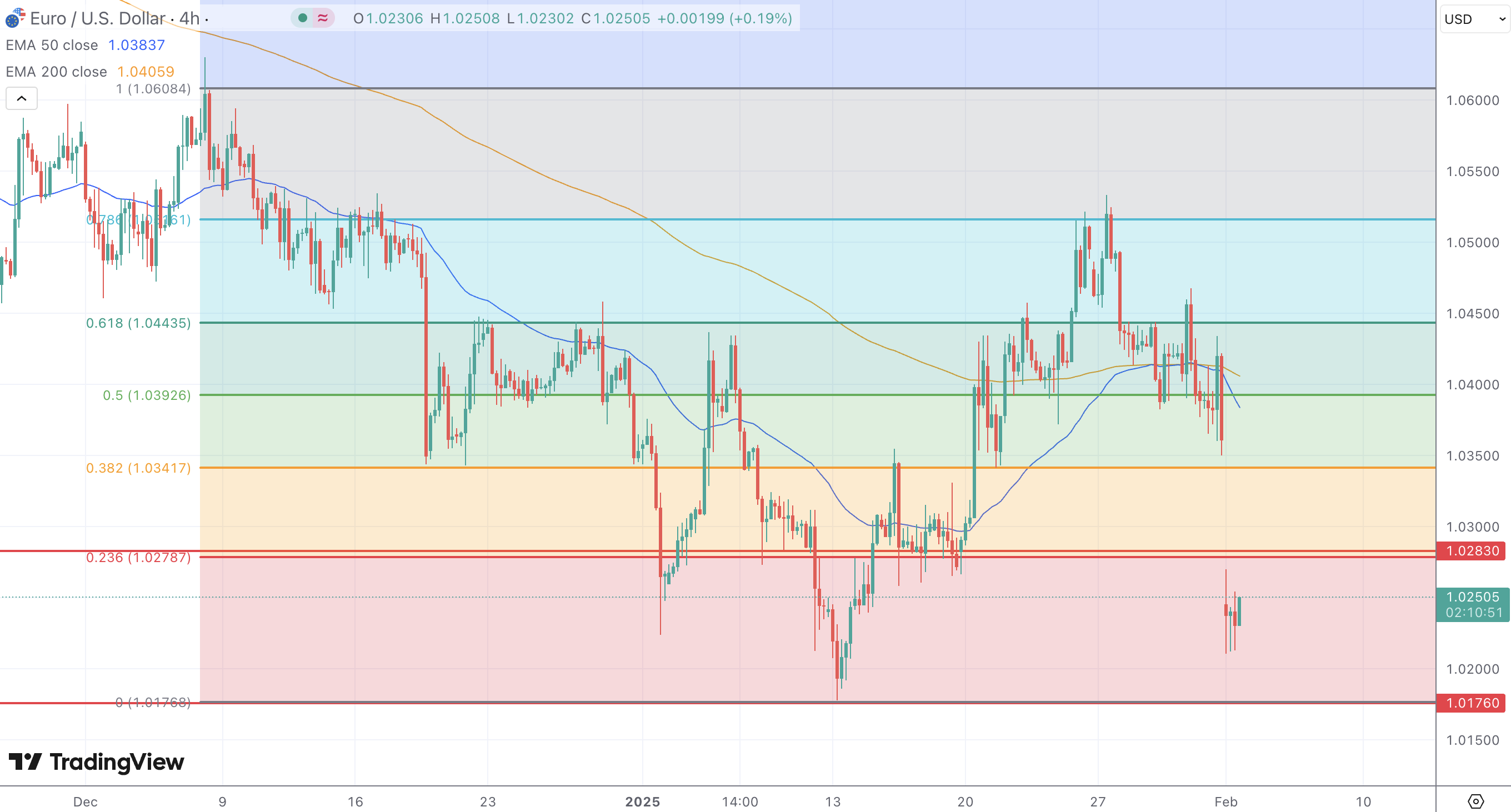Key Takeaways
- The EUR/USD pair has declined by approximately 1% due to renewed U.S. tariff threats against the Eurozone.
- Technical indicators suggest immediate support at 1.0176 and resistance levels at 1.0283 and 1.0343.
- Eurozone inflation data indicates a core rate of 2.7%, potentially affecting ECB rate cut considerations.
- Upcoming U.S. economic indicators and trade policy developments will be crucial in determining the pair’s direction.
Market Dynamics and Recent Performance
Over the past week, the EUR/USD pair has experienced notable volatility, primarily influenced by geopolitical developments and economic data releases. The euro depreciated by approximately 1% against the U.S. dollar following renewed tariff threats from U.S. President Trump targeting the Eurozone. This decline underscores the sensitivity of the euro to trade-related news and its potential impact on the Eurozone economy.
Concurrently, the U.S. Dollar Index (DXY) is approaching the 110 threshold, bolstered by robust PMI data and the aforementioned tariff announcements. These factors have heightened inflation concerns, further strengthening the USD against major currencies.
Technical and Fundamental Influences
From a technical perspective, the EUR/USD is trading near the 1.0230 level, slightly below its pivot point at 1.0232. Immediate support is identified at 1.0176, with a breach potentially accelerating declines toward 1.0141. On the upside, reclaiming momentum above the pivot could target resistances at 1.0283 and 1.0343. However, the 50-day and 200-day EMAs, situated at 1.0379 and 1.0386 respectively, may pose significant resistance, indicating a prevailing bearish trend unless a decisive breakout occurs above these levels.
Fundamentally, the Eurozone’s economic outlook remains cautious. Recent data revealed that Eurozone inflation reached 2.5%, with the core rate at 2.7%, potentially diminishing prospects for European Central Bank rate cuts.
Looking Forward
In the upcoming week, market participants will closely monitor key economic indicators, including the Final Manufacturing PMI and ISM Manufacturing PMI, to gauge the health of the U.S. economy and its potential impact on the USD. Furthermore, any developments related to U.S. trade policies, especially concerning tariffs on Eurozone imports, will be pivotal in influencing the EUR/USD trajectory. Given the current technical setup and fundamental backdrop, the pair may continue to face downward pressure unless there is a significant shift in economic data or policy announcements.


